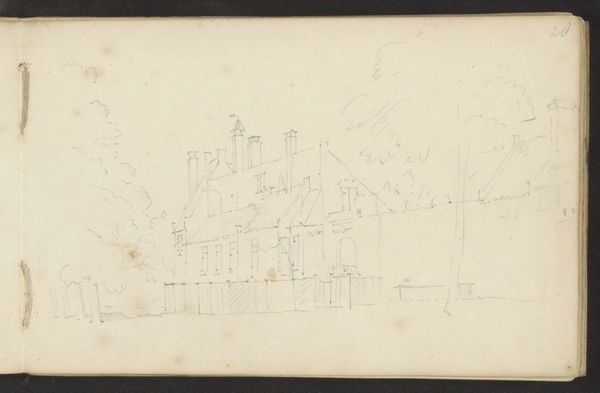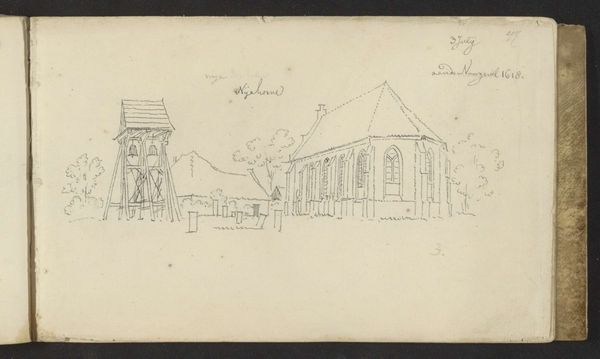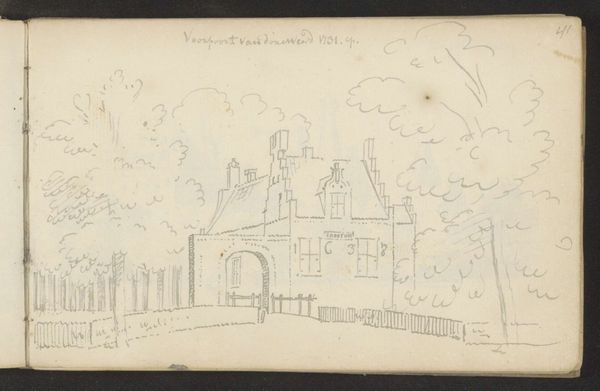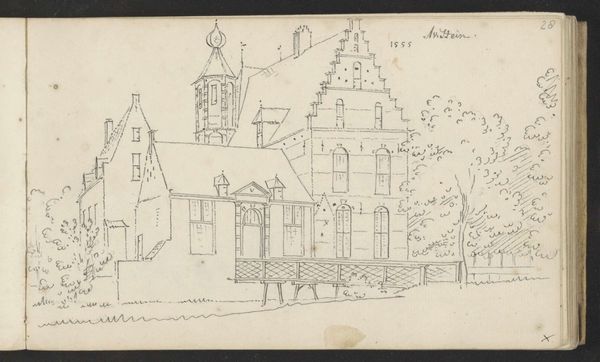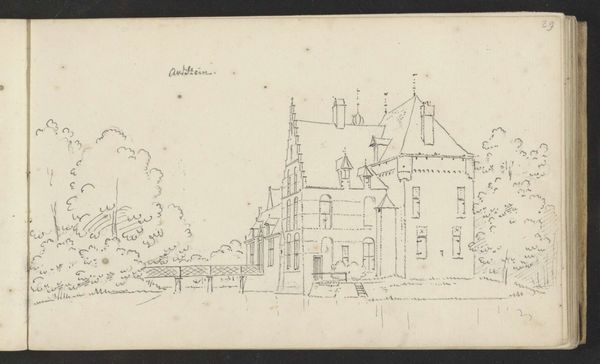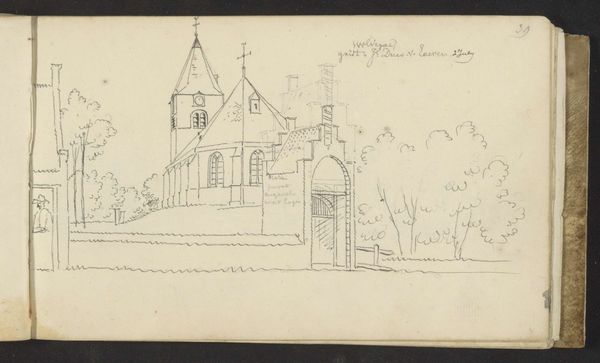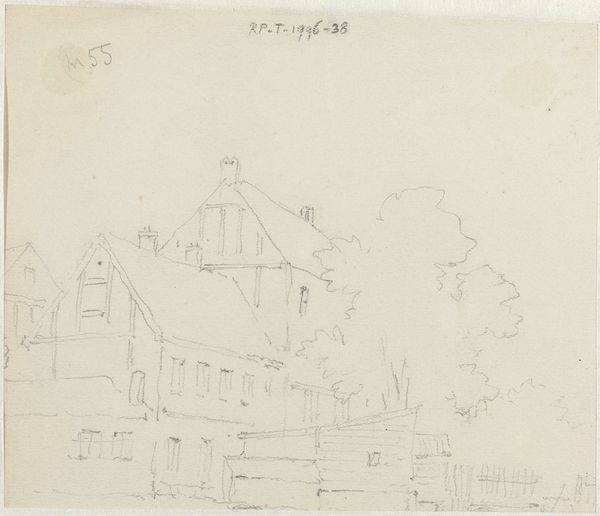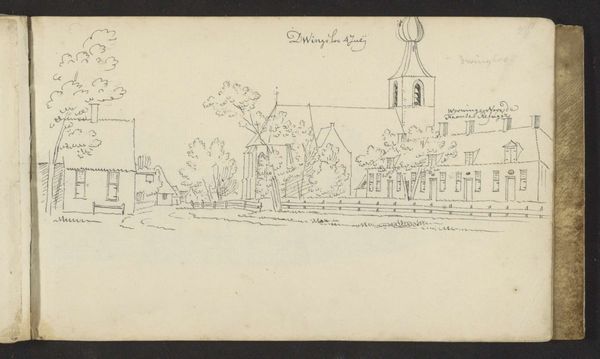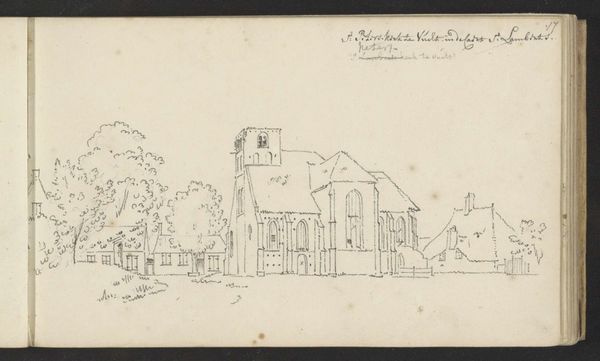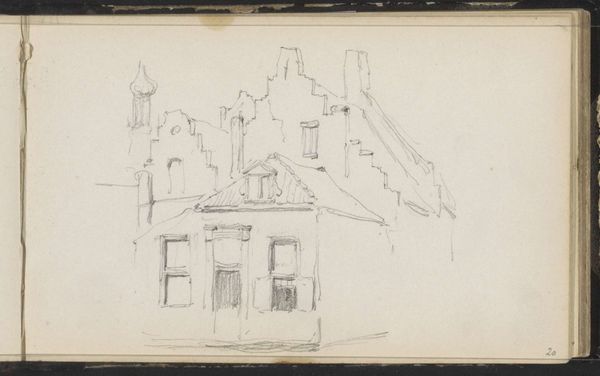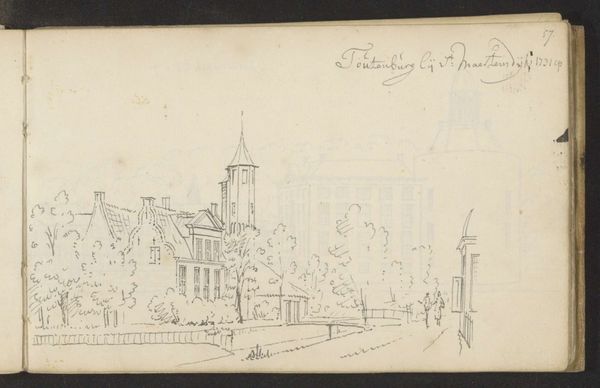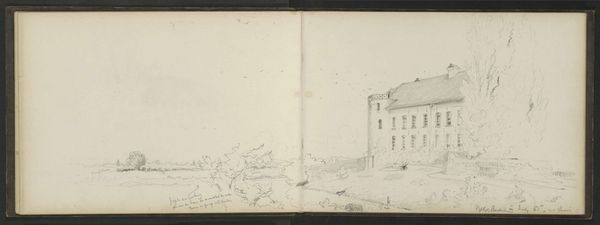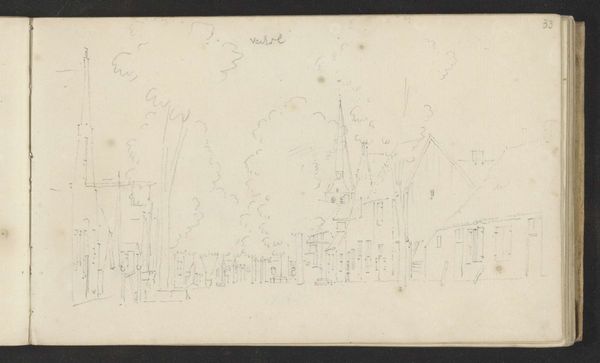
drawing, paper, ink, pen, architecture
#
drawing
#
quirky sketch
#
dutch-golden-age
#
sketch book
#
landscape
#
paper
#
personal sketchbook
#
ink
#
idea generation sketch
#
sketchwork
#
pen-ink sketch
#
pen work
#
sketchbook drawing
#
pen
#
storyboard and sketchbook work
#
sketchbook art
#
architecture
Copyright: Rijks Museum: Open Domain
Curator: This is "Kasteel Rietbereikerswaard te Jutphaas," a pen and ink drawing on paper by Abraham de Haen the Younger, created in 1731. It resides here at the Rijksmuseum. Editor: The starkness of the lines immediately strikes me. It's so precise, but with a freedom that suggests it was captured quickly. What an arresting composition! Curator: Indeed, the sketch, part of the Dutch Golden Age tradition, depicts a castle. Think about the context: this drawing exists within a period of immense wealth and burgeoning colonialism, and even landscape art, like this, is implicitly tied to power and ownership. What did it mean to survey and depict the land in this way? Editor: I appreciate that interpretation. I'm drawn to the tower itself. The artist has used only the most essential lines to evoke the height and the form. Note how it anchors the entire composition with its verticality. There’s a strong interplay of orthogonal lines in the whole structure. Curator: Right. Jutphaas, as a location, also adds layers. How might this specific castle embody local power dynamics at play? I wonder about the socio-economic standing of those who occupied and laid claim to this castle at the time it was created. These drawings, although small in scale, could potentially offer us insights into these social relations. Editor: Agreed. There's a deliberate asymmetry to the castle, wouldn’t you agree? A tension arising between its functional design and its aesthetic presentation. It provides for such a distinctive character to this artwork. Curator: The 'character' you see certainly prompts me to consider whose gaze is prioritized in this depiction and the narrative this particular 'character' enforces. Editor: In seeing the artwork through your description, I see that there's far more here than first met the eye. Thanks for expanding its world for me. Curator: Thank you for expanding my interpretation of it. Analyzing artworks is always enriched by our conversations.
Comments
No comments
Be the first to comment and join the conversation on the ultimate creative platform.
